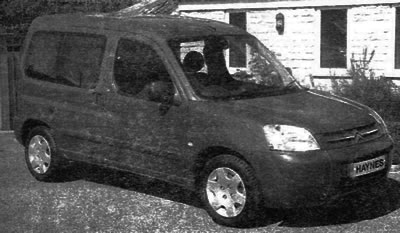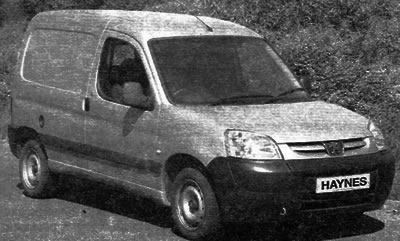In the autumn of 2002, the entire model range underwent a serious «cosmetic surgery», which was accompanied by a significant change in style and affected the front bumpers, headlights, hood and front fenders. Along with this, numerous mechanical and electrical changes were made.
In accordance with the model and year of manufacture, a whole range of gasoline and diesel engines is offered. These are 1.4L petrol engines (1360 cm3) and 1.6 l (1587 cm3) and diesel and turbodiesel engines 1.8 l (1769 cm3), 1.9 l (1868 cm3 and 1905 cm3) and 2.0 l (1997 cm3). For a limited period of time, early models were equipped with a 1.8 liter gasoline engine (1761 cm3), but it is not covered in this Guide. All engines are four-cylinder, with one or two overhead camshafts. Over the years of manufacture, these engines have been tested on many Citroen and Peugeot cars. All engines are combined as standard with a manual gearbox mounted transversely at the front of the vehicle: the gearbox is attached to the left end of the engine.
The cars have a fully independent front suspension with MacPherson struts that combine shock absorbers and springs. A stabilizer bar is installed in front. The rear suspension is borrowed from the Peugeot 405 model range. This is a semi-independent suspension with torsion bars and trailing arms. Most models use a steering gear type «pinion rack», equipped with hydraulic booster.
The range offers a wide range of standard and optional (supplied by special order) equipment to satisfy the most demanding taste. This is power steering, centralized door locking system («central locking»), engine immobilizer, power windows, power sunroof and airbags. Some models offer anti-lock brakes and air conditioning as optional or standard equipment.
With regular maintenance in accordance with the manufacturer's recommendations, this vehicle will prove to you its reliability and economy. The engine compartment has a good layout that allows you to provide good access to all nodes that require fairly frequent attention.
About this guide
The purpose of this manual is to help you make the best use of your vehicle. This can be achieved in several ways. This Guide will help you decide what work needs to be done (even if you are going to entrust it to the specialists of the service station). In addition, it will provide information about ongoing maintenance and prompt the logic of actions and checks in case of malfunctions. However, we hope that you will use this Guide for self-study. For simpler operations, this can be even faster than going to the service station, since you will have to go there twice: leave and pick up the car. Perhaps more important to you is the ability to save money by avoiding staff costs and plant overhead.
The manual is provided with illustrations and descriptions to help you better understand the vehicle and the functions of the various components. Actions are described in a clear step-by-step sequence. The same is true for accompanying photographs/drawings. The illustrations are numbered, consisting of the number of the paragraph and the number of the paragraph to which the particular figure refers (if there is more than one figure in the paragraph, additional alphabetical numbering is applied).
Concepts «left» And «on right» refers to a person sitting in the driver's seat and looking ahead.
indication «Tighten to specified torque» means that this threaded connection must be tightened with a torque wrench or wrench with an angular torque scale or to a certain angle, regulated «specifications», given at the beginning of each chapter.


